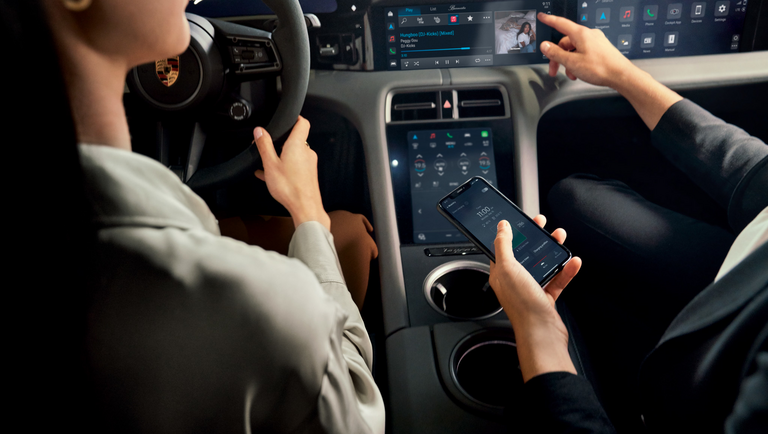
- Published on: 02.12.2022
- 3:35 mins
Data as Enabler
Enhancing the User Experience and Identifying New Business Models
With Connected Car Apps to increased customer satisfaction
In the EU, 24 per cent of drivers now travel in a connected car. This number is set to increase, meaning that digital services in networked vehicles will become more and more important. OEMs rely on these services to offer customers a holistic and positive user experience in their cars. This experience can quickly turn negative when a digital service is not good enough. Connected apps have therefore become a component that sets OEMs apart from their competitors. The manufacturers that know exactly what their customers want and use this feedback to develop and offer corresponding digital services are the most successful.
Using Free Data to Identify Opportunities to Innovate
One way of gathering this feedback is to survey (potential) customers using tailored questionnaires, like those supported by SAP Qualtrics. The test results recently published by the ADAC (Allgemeiner Deutscher Automobil Club – the German Automobile Association) regarding the user friendliness and user experience of vehicle software also offers some interesting insights. Another method is to evaluate data that is already available online for free. Numerous open-access platforms contain a wealth of data in various forms, such as reviews in app stores and on YouTube. In most cases, crawler scripts are the best tool for easily retrieving and aggregating this data. To illustrate the potential of this method, we collected reviews about apps offered by BMW, Mercedes, Porsche, and Tesla. We then evaluated the data using the two text analysis methods: topic modeling and sentiment. We were able to draw general conclusions about the user experience from the results.
Topic Modeling & Sentiment Analyse
Topic Modeling
... is a statistical method of analyzing texts. The aim is to identify the topics that appear in the texts. The content of the texts can then be summarized based on the topics identified.
Sentiment Analyse
... is a subfield of text mining. It is a qualitative method of analyzing texts and can be used to identify an author’s feelings toward a particular topic, company, or product.
Flawless Functionality: Dedicated Platforms Guarantee Stability
The first conclusion from the analysis is that users expect connected car services to function flawlessly. However, it seems that this is not always guaranteed. For example, the online data analysis identified problems with controlling the auxiliary heating system and determining the exact vehicle location as recurring topics. From our perspective, a stable IT infrastructure is essential for addressing these complaints, meaning there is an increasing demand for OEMs to establish their own connected car platforms. The analysis identified digital quality management as another important topic. Customers expect database systems and Internet of Things (IoT) devices to always exchange data securely and communicate without errors.
More Features: Integrate with Third Parties
In addition to high-performance apps, the analysis shows that customers want better connectivity compared to what is currently available. Smart technologies like the IoT can meet this demand. It may also be useful for third parties, such as dealers, workshops, and electric charging stations, to connect their systems to an OEM’s app and allow customers to conveniently perform various actions via a single app. These could include checking the status of different vehicle components and arranging a maintenance appointment at their preferred workshop. A seamless connection in the backend of the app and creating an intuitive user interface is essential for implementing these scenarios.
Impeccable Service: AI as an Enhancement
The third conclusion from the online data analysis shows that customers need support with setting up and operating connected apps. They expect an impeccable service that is delivered promptly and professionally. This is an area in which AI can really help OEMs: Chatbots, voice AI and intelligent routing are all automated options for partially or even completely dealing with customer inquiries. This automation is advantageous for customers because they no longer need to wait for assistance. Human consultants also benefit from AI solutions because they have extra time to deal with the more demanding requests properly.
Insights with Potential for New Business Models
We believe that our findings about the apps from the above four car manufacturers are relevant to all other OEMs. Stakeholders in other industries should also be thinking about the three aspects that we identified: functionality, features, and service. That said, these general statements are no substitute for a more tailored analysis. Any company planning to extend its analog products with digital services needs to continuously monitor customer feedback. Equipped with this information, companies can deliver an excellent user experience at the same time as exploring innovative business models.


